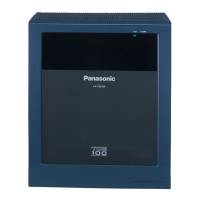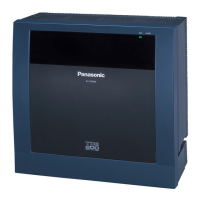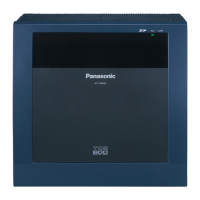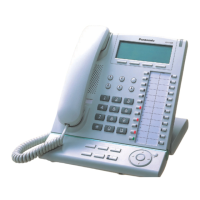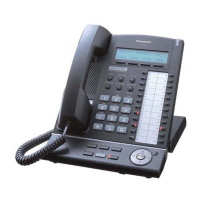In the same way as when connected by a TIE Line, if a dialed number is not found at the local PBX, the call
can be sent to other PBXs connected via an IP network. When an extension number is dialed, the PBX first
searches local extensions for a matching number. If there is no match, the PBX then checks the TIE Line
Routing Table for the Gateway Group for a corresponding entry. If an entry is found, the call is sent to the
connected PBX.
Automatic Rerouting of VoIP Calls to Public CO Lines
When a VoIP
call cannot be completed successfully, the PBX can automatically attempt to make the call using
a public CO line instead. This provides a backup method of making calls in cases when IP network transmission
cannot be completed successfully.
[Example]
PBX-1 PBX-2
Extn.1000
Extn.1011
(333-123-1011)
IP-GW IP-GW
Dials
"7-20-1011".
Private IP
Network
Telephone Company
(area code: 222)
Telephone Company
(area code: 333)
PBX code: 20PBX code: 30
1-333-123-1011
The leading numbers of extensions accessed through the VoIP network are added as entries to the Quick
Dialing table, in addition to being registered as Other PBX Extension Numbers, as shown below:
[Programming Example]
Number to dial to call an extension at another PBX using VoIP network:
7 (TIE line access number) + 20 (PBX Code) + 1011 (extension number)
Number to dial to call that extension using a public CO line:
9 (CO line access number) + 1-333-123-1011
[Quick Dialing Table]
Quick Dialing No. Destination No.
720 91333123
If the call cannot be completed using the VoIP network, and the dialed leading number is found in the Quick
Dialing Table, the call will be automatically rerouted to a CO line and as specified by the corresponding
destination number.
When a call is made using the VoIP network, if the PBX does not receive a reply from the other PBX within
about 4 seconds
of making the call, or an error is returned, the call is rerouted to a public CO line as specified.
Sending Faxes Through the Network
Through system programming, it is possible to select whether faxes are sent using analog or T.38 protocol
signals.
Conditions
[General]
• Some QSIG services are available. (® 13.1.20 PRIVATE NETWORK FEATURES—QSIG)
• Toll Restriction (TRS) settings apply to calls rerouted to public CO lines.
268 Feature Manual Document Version 2009-12
13.1.25 Private Network Features—VoIP (Voice over Internet Protocol)
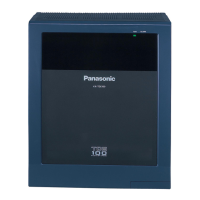
